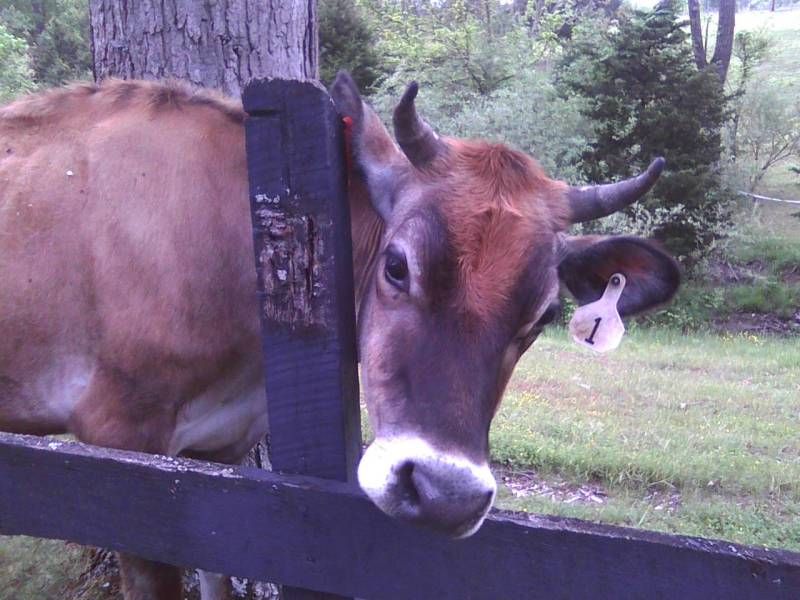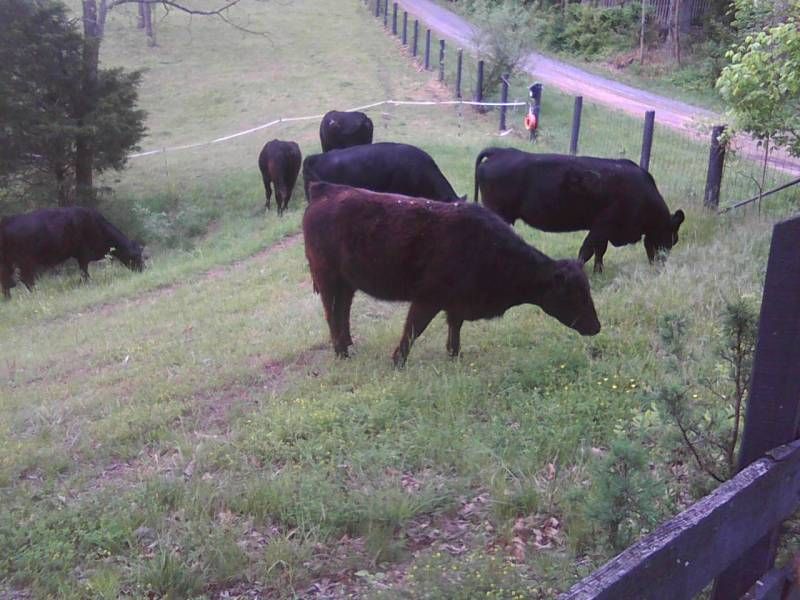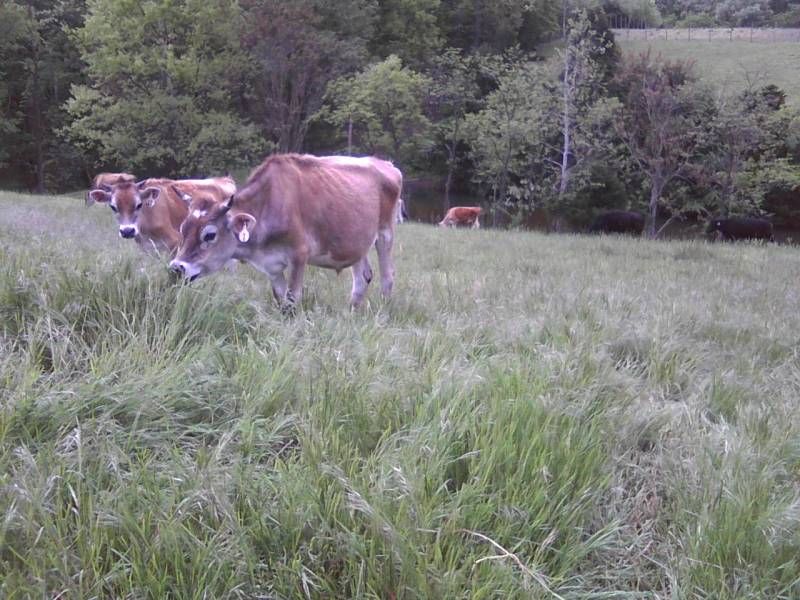 We haven't posted much about cattle because there's not much to say. They are slow growing and have a long gestational period. They eat grass and hay. They moo. They walk around. Not very exciting. Not a lot to report on them unless something major happens such as new bottle-fed calves arriving or a sick animal.
We haven't posted much about cattle because there's not much to say. They are slow growing and have a long gestational period. They eat grass and hay. They moo. They walk around. Not very exciting. Not a lot to report on them unless something major happens such as new bottle-fed calves arriving or a sick animal.Right now, there are Jersey steers and dry Angus cows in the field. The steers arrived here as bottle-fed calves in the winter of 2010/2011. They are not growing quickly and Greg really wants to get some weight on them so they can be butchered this fall.
To that end, Greg has decided to take a new approach to managing the cattle during the spring and summer this year. Typically, the cattle will graze on a very large pasture area for a long period of time, often for the entire season. The cattle wear down that pasture and eat it down to the dirt. It requires them to range over a large area, expending food energy that could be used to increase muscle mass and bring them to market weight much faster.
In comes the idea of "mob grazing". This is also referred to as intensive pasture management. I'm sure there are a few other catch phrase names for it, but we call it mob grazing.
The premise is simple. Reduce the amount of pasture the herd has access to, then move them to a fresh area as soon as they've eaten down one section. Depending on the number of cattle in your herd and the size of the pasture area they are grazing, you might move them daily, every few days or weekly. Your goals are: reduce the amount of walking, let the cattle eat down that area and let it rest and regrow before bringing them back to it, intense manure spread in a short period of time.
By utilizing this method of grazing, you are going to have more intense manure coverage in your pastures. The cattle won't be walking over acres and acres and acres to find fresh growth of grass. This will help them put on weight much faster.
Greg started this probably about a week ago. We've seen the cattle resting more - a sign that they are full and chewing their cud - instead of constantly wandering looking for new grass. He hasn't had to put out any more hay. They are getting fresh, tender, Spring grass.
Today, the cattle moved to a new section of pasture. Only had to call them two or three times because once they realized it was time to move to new grass, they came running!
 |
| "Heads down" is a good sign during mob grazing. Everyone's eating and happy. |
 |
| These are very slow growing dairy steers. They are boney! We're hoping the mob grazing will put some significant weight on them. |
How much room are you giving them and how often are you moving them?
ReplyDeleteIt really depends on the portion of pasture that they're on. There are 13 head (I think). One portion was enough to keep them for about five days. Another portion was two days. The section they're on now has easy access to water (the pond) but also has them in the woods which means we're losing manure that would be beneficial to the pasture so Greg wants them off that pasture quickly. I believe Polyface puts 80+ head on one acre a day but I could be wrong on that.
ReplyDelete